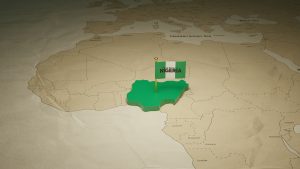Monetary Policy: Square pegs in round holes – Demand-pull solutions to cost-push problems
The Monetary Policy Committee (MPC) of the Central Bank of Nigeria (CBN) raised its benchmark interest rate for the first time since July 2016. It voted to hike the monetary policy rate (MPR) by 150 basis points to 13% in response to concerns over accelerating inflation, haemorrhaging external reserves in addition to the need to restore investor confidence and boost foreign portfolio inflows.
Other policy parameters were unchanged:
- Cash Reserve Requirement (CRR): 27.5%
- Liquidity Ratio (LR): 30%
- Asymmetric corridor around the MPR: +100/-700bps
While it is unusual for central banks to make significant policy changes in the run-up to a general election due to the potential social and political consequences, the current economic imperatives require that political considerations take a back seat.
Rationale:
The MPC was confronted with the dilemma of how to best combat rising inflation while continuing to support the frail economic recovery. The global economy has entered into an inflationary era ushered in by the raft of fiscal and monetary policy measures deployed across the globe in response to the negative effects of the COVID-19 pandemic. Global supply chain constraints have also been exacerbated by the Russia-Ukraine conflict leading to a spike in global energy and food prices.
Raising interest rates amid fragile growth may appear counterintuitive, but it is the conundrum currently confronting most central banks across the world. The US Fed hiked its policy rate by 50bps to 1% p.a. in May, its second interest rate hike in 2022, while the Bank of England (BoE) raised its benchmark interest rate to 1% p.a. in May, the fourth interest rate hike since November 2021 amid rising inflation. While both advanced and emerging countries are responding to rising prices by tightening monetary policy, the impact of external debt payment costs on emerging market and developing economies threatens to undermine their economic recovery trajectories. In response, the International Monetary Fund (IMF) has revised its global growth forecast for 2022 and 2023 downward to 3.6% for both years from 4.4% and 3.8% respectively.
The 150bps rate hike was an aggressive response which marked a noticeable shift from the CBN’s historically dovish stance on interest rates and left little room for ambiguity in the interpretation of the committee’s actions which signals a possible return to monetary policy orthodoxy – in alignment with its mandate of maintaining price stability. All members of the committee voted for a rate hike (1 member – 50bps, 4 members – 100bps and 6 members 150bps).
Key Considerations – Rising Inflation
The headline inflation rate rose for the third consecutive month in April 2022, by 90bps to 16.82%. This represents the highest level of headline inflation in 8 months on the back of global supply shocks, insecurity in Nigeria’s farming belt, seasonality (planting season and Easter demand), higher energy costs, the exchange rate pass-through effect and excess liquidity.
Figure 1: Headline Inflation (%) (January 2022 – December 2022)


The CBN has repeatedly referred to inflation above 12% as growth-retarding. The MPC, as stated in its communique, regarded the 90bps spike in inflation as rather steep and indicative of heightened levels of inflationary pressure. The CBN has supported the post-pandemic recovery with an accommodative approach to development finance initiatives via its intervention schemes – totalling circa ₦6tr– which have triggered a surge in liquidity and driven demand-pull inflation.
Text Box 1: CBN Intervention Schemes (Cumulative Disbursement)
|
Source: The Central Bank of Nigeria
The CBN by its actions has committed to mopping up the excess liquidity while seeking to limit capital outflows by narrowing the interest rate and inflation differential, curtail exchange rate pressures while continuing to support economic growth by maintaining its fiscal expansion programs.
Other key considerations – Fragile GDP Growth
According to figures by the National Bureau of Statistics (NBS), the Nigerian economy expanded, for the sixth consecutive quarter, by 3.11% year-on-year. This is 0.88% lower than the growth rate of 3.98% achieved in Q4’21, and given the typical slowdown in economic activity during the first quarter of the year and the economic shocks induced by the Russian-Ukraine conflict, the numbers were in line with expectations. The numbers are also reflective of sustained positive momentum along the economic recovery path as this was the fastest-growing first quarter since 2015 (Q1’14: 3.96%).
Figure 2: GDP growth (Q1 2021 – Q4 2022)

Bleeding Reserves and Heightened Exchange Rate Pressures
The external reserves rose steadily for the first three weeks in April by 0.7% to $39.81billion as at 22nd April 2022 on the back of higher crude oil prices. However, the gross external reserves have subsequently resumed a downward trend, losing 3% to stand at $38.59bn as at 25 May 2022. The reserves depletion is largely reflective of crude oil production shut-ins which continue to dampen the impact of higher crude oil prices on FOREX receipts, in addition to higher import costs for refined petroleum products. At the same time, increased demand for dollars as politics takes centre stage in the run-up to the 2023 elections, is putting additional pressure on the currency which has lost 4% in the first five months of the year at the parallel market to ₦609/$ as at 25 May 2022.
Figure 3: Gross External Reserves ($’ billion)

Implications of higher interest rates
The hike in the MPR will push up borrowing costs further. Ordinarily this would mean even higher debt service costs for the government as Treasury Bill rates would be expected to rise in tandem – by around 2-3%. However, we note that the Federal Government of Nigeria has through its borrowing from the CBN (Ways and Means Advances) estimated at ₦18.16trn as at 31 January 2022, kept the treasury bill rates artificially low, at an average of 4.87% in the first five months of 2022. Interest payments as a percentage of government revenue were estimated at 114% in 2021. While private sector borrowing costs could also rise, we recognise the positive impact of the CBN’s Loan-Deposit-Ratio (LDR) policy (65%) on the supply of credit to the private sector – which has exceeded demand. This could limit the ability of individual banks to raise interest rates in response to higher savings rates – barring a uniform industry-wide increase. Higher borrowing costs are likely to stifle the pace of economic recovery, while credit default rates could also rise. Higher interest rates should mop up naira liquidity and lower forex demand pressure (which is highly speculative) while also reducing capital flight. However, legitimate pent-up demand for forex continues to rise and remains unmet as companies attempt to stock up on raw materials amid lower FOREX supplies and the CBN’s attempt to lower the pace of reserves depletion. Higher interest rates are also likely to make investors rotate their portfolios in favour of fixed income securities which should have a negative impact on the equities market.
A Contrarian View
Many believe that the CBN’s decision could prove to be counter-productive as Nigeria’s inflation problem stems from issues that are supply-side phenomena, and rising production costs which are not caused by excess liquidity (demand-pull). Production costs have surged due to several factors that have little to do with monetary policy. These range from global supply chain disruptions, the Russia-Ukraine conflict and its impact on energy and food prices, to the impact of insecurity on agricultural output and other structural factors that limit electricity supply. These problems require structural reforms and the current tightening measure could suffocate economic growth and aggravate inflation further by pushing up production costs.
The MPC’s decision was bold given the policy choices that lay before it and the trade-offs that each one presented. But will higher interest rates curb this current wave of inflationary pressure? Time will tell.






